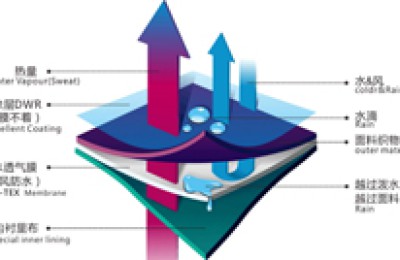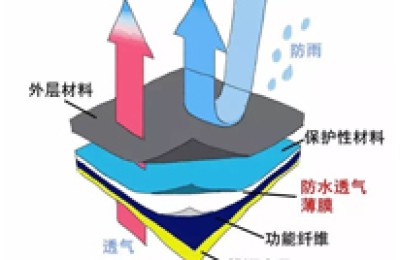At 3:00 a.m. on December 17, Beijing time, the U.S. Federal Open Market Committee (FOMC) announced its latest interest rate resolution, keeping the benchmark interest rate unchanged in the range of 0%-0.25%, in line with the market’s general expectations. The Fed said it would continue to purchase at least $120 billion in bonds each month “until substantial further progress has been made toward achieving the Committee’s maximum employment and price stability objectives.”
Federal Reserve Chairman Powell said at a press conference after the Federal Reserve interest rate decision that the Federal Reserve is committed to achieving policy goals and monetary policy will continue to provide strong support for the economy. He reiterated that the U.S. economic outlook faces uncertainty and will depend on the development of the COVID-19 epidemic, and that the next few months may be very challenging.
After the Federal Reserve announced the interest rate decision, the U.S. dollar index surged higher and then fell. Gold and silver first declined and then rose. The main COMEX gold contract hit a maximum of 1,870 US dollars per ounce, and the main COMEX silver contract expanded to more than 3%. , hitting a maximum of $25.64 per ounce, the highest in more than a month.
The Federal Reserve kept its benchmark interest rate unchanged, U.S. stocks closed mixed, and the Nasdaq hit a record closing high. As of the close, the Dow closed down 44.77 points, or 0.15%, at 30154.54 points; the Nasdaq closed up 63.13 points, or 0.5%, at 12658.19 points; the S&P 500 closed up 6.55 points, or 0.18%, at 3701.17 points.
The Federal Reserve reiterated its stance of monetary easing, and the Nasdaq hit a record closing high
December 17, Beijing time At 3:00 a.m., the U.S. Federal Open Market Committee (FOMC) announced the latest interest rate resolution, keeping the benchmark interest rate unchanged at a range of 0%-0.25%, the excess reserve ratio (IOER) at 0.1%, and the discount interest rate. It remained unchanged at 0.25%, in line with market consensus expectations. This meeting is the Fed’s last policy meeting of the year.
The Fed said it would continue to purchase at least $120 billion in bonds per month “until substantial further progress has been made toward achieving the Committee’s maximum employment and price stability objectives.” The Fed said these asset purchases help promote smooth market functioning and easy financial conditions, thereby supporting the flow of credit to households and businesses. But the commission gave no indication it would extend the purchase period.
The Federal Reserve expects that U.S. GDP will shrink less in 2020 than it forecast in September, and that growth in 2021 and 2022 will be higher than its September forecast. Additionally, the median Fed forecast shows interest rates will remain near zero until the end of 2023. The dot plot of the Fed’s interest rate hike path shows that the Fed expects to maintain interest rates at current levels until 2023, consistent with September.
After the announcement of the interest rate decision statement, the probability that the Federal Reserve will maintain interest rates in the 0%-0.25% range in January next year is 100%, and raise interest rates by 25 basis points to the 0.25%-0.50% range. The probability of maintaining interest rates in the range of 0%-0.25% in February next year is 100%, and the probability of raising interest rates by 25 basis points is 0%, which is consistent with that before the statement.
Federal Reserve Chairman Powell said at a press conference after the Federal Reserve interest rate decision that the Federal Reserve is committed to achieving policy goals and monetary policy will continue to provide strong support for the economy. He reiterated that the U.S. economic outlook faces uncertainty and will depend on the development of the COVID-19 epidemic, and that the next few months may be very challenging.
Powell said that the pace of economic improvement has slowed in recent months and the path ahead remains highly uncertain. The unemployment rate continued to rise in November, the pace of improvement in the job market has slowed, and the Federal Reserve will not ignore the millions of unemployed people. However, Powell said the Fed believes there are fewer downside risks now than in September.
Powell said that the Federal Reserve has provided additional guidance for bond purchases with the goal of providing strong support to the U.S. economy. The Fed will continue to increase its holdings of U.S. Treasury bonds. Powell also said that the new crown epidemic has had a significant impact on inflation, and overall U.S. inflation levels remain below long-term goals. The U.S. economy cannot achieve a full recovery until people feel safe. Regarding the new crown vaccine, Powell said that major challenges and uncertainties surrounding the vaccine still exist.
The Federal Reserve kept its benchmark interest rate unchanged, U.S. stocks closed mixed, and the Nasdaq hit a record closing high. As of the close, the Dow closed down 44.77 points, or 0.15%, at 30154.54 points; the Nasdaq closed up 63.13 points, or 0.5%, at 12658.19 points; the S&P 500 closed up 6.55 points, or 0.18%, at 3701.17 points.
Silver performed well
After the Federal Reserve announced the interest rate decision, the U.S. dollar index After rising higher and falling back, gold and silver first declined and then rose. The main COMEX gold contract hit a maximum of $1,870 per ounce, and the main COMEX silver contract expanded to more than 3%, reaching a maximum of $25.64 per ounce, the highest in more than a month.
“In fact, since November 30, gold has recorded a 4.7% increase. The main reason behind this is that the epidemic in the United States is still relatively severe and monetary policy is loose. Expectations for a decline in the U.S. dollar index.”��Rongrongda Futures analyst Huali said that from the perspective of the epidemic, the third round of the epidemic in the United States that began in mid-October has intensified. The number of new confirmed cases in a single day not only far exceeds the previous two rounds, but is still rising. In the past week, the United States has The daily average of newly confirmed cases is 223,000, setting a new weekly daily average since records began. The worsening of the epidemic has once again cast a shadow on the short-term U.S. economy, which may stimulate a rise in gold prices.
Zheng Hong, a precious metals analyst at Zheshang Futures, told a reporter from Futures Daily that in terms of risk aversion, as vaccine progress is hindered, the negative factors for gold prices have weakened. According to him, one of the logics behind the overall decline of precious metals in November is that Pfizer and AstraZeneca’s vaccines have made greater progress, and the rebound in market risk appetite has led to capital outflows from safe-haven assets such as gold. However, due to insufficient raw materials and limited production capacity, Pfizer’s vaccine shipments this year can only reach half of expectations. At the same time, the time for large-scale vaccination next year will also be postponed, causing the early negative factors of precious metals to subside.
“Currently, the actual interest rate on U.S. debt has dropped to -1%, the U.S. dollar index has dropped sharply to the 90 level, and the fundamentals of precious metals have been bullish.” Zheng Hong said that since November The epidemic in the United States has once again occurred, and the number of new confirmed cases every day has repeatedly exceeded 200,000. In the absence of fiscal stimulus policies and the government’s resumption of control measures, the employment situation in the United States was extremely severe in November. The new non-farm employment data was almost halved, and the fundamentals continued to trend. Weakness gradually builds momentum for the upward movement of precious metals. It is worth noting that at present, although the market has recovered, the willingness to hold gold positions is still not high. As of December 15, SPDR gold ETF holdings were 1,170.15 tons, showing a continued downward trend since its holdings fell below 1,200 tons in November.
As far as gold is concerned, Huali believes that with the dust settling of the US election, widespread vaccination and the introduction of the US fiscal stimulus bill, the market’s expectations for future economic recovery have once again heating up, which has limited the rise in gold prices to a certain extent. Generally speaking, Huali believes that the factors affecting the long and short gold prices are relatively stalemate, and market transactions as a whole tend to be cautious.
As for silver, Zheng Hong said that the recent trend of silver is stronger than that of gold. The reason is that on the one hand, the silver variety is relatively small and more elastic than gold. On the one hand, silver has stronger industrial properties. “Photovoltaic silver paste is a very important link in the photovoltaic industry chain that the market has paid close attention to recently. If the epidemic situation improves in 2021, the large-scale production of solar cells will generate greater industrial demand for silver, thus creating a positive situation.” Zheng Hong said.
Iron ore has strong short-term demand support
Nanhua Futures metals analyst Wang Zeyong said that currently iron ore Demand increments are more certain. After entering the fourth quarter, due to the strong resilience of demand for finished products, hot metal production has remained high. According to him, environmental protection production restriction requirements in previous winters were an important factor restricting the increase in domestic steel production. However, this year due to the epidemic background, “one size fits all” production restrictions are strictly prohibited in various places, and environmental protection production restrictions are mostly at the sintering end. In addition, steel companies have invested in environmental protection facilities for many years, and the production capacity that does not meet environmental protection requirements is already in the minority, and the blast furnace operation is significantly higher year-on-year. In the early stage, water threads were strictly inspected, and the supply of short-process finished products was reduced. Long-process production was subsequently increased, which also formed a strong support for iron ore demand.
From an overseas perspective, overseas molten iron production has recovered rapidly recently, with output in October reaching 35.44 million tons. The year-on-year decline in that month narrowed to 3.87%, which has led to a recovery in iron ore demand. Data show that demand for goods from abroad has increased, and the proportion of Brazilian mines exported to China fell to 74.2% in October from 84.2% in September. “The increase in overseas demand has diverted my country’s iron ore supply, reducing the pressure on port accumulation. The fundamentals of domestic supply and demand for iron ore continue to improve, driving prices to continue to rise strongly.” Wang Zeyong said.
On the supply side, Wang Zeyong believes that there are also many short-term bullish factors. This week, Australia’s total shipment volume decreased by 1.661 million tons month-on-month, mainly due to the impact of the passage of the hurricane last Friday. The impact is expected to be short-lived and have little impact on the total volume. In mid-December, members of the Australian Parliament recommended that the Western Australian government stop issuing new iron ore mining approvals. Although Australia has not yet passed legislation on this, it has triggered market concerns about iron ore supply; Brazilian Vale’s shipments fell significantly in November. There will still be some pressure in December.
In his opinion, on the premise that other mining areas maintain the current speed and efficient production, iron ore output in the fourth quarter may reach 89.7 million tons. It is estimated that the actual annual output of iron ore in 2020 There is still a shortfall of 0.05-10 million tons in production. Previously, Vale announced plans to resume production at the Samarco mining area by the end of the year. The mine’s previous annual output was about 30.5 million tons. In order to increase production beyond expectations, it is necessary to continue to pay attention to whether there is a surge in shipments at the end of the year.
“Because the output of steel mills is much higher than the same period in previous years, the steel mills restocked raw materials in advance in mid-November. The inventory at the port stopped accumulating and decreased again. As of early December, the port inventory Inventories are down 0.5% from the beginning of the year.” Wang Zeyong said that the current iron ore supply and demand pattern remains good, and the resumption of overseas blast furnace production has brought more demand. Ore prices will remain strong in the short term. We still need to pay attention to changes in market sentiment, and we need to pay attention to risks at high levels.
In terms of forwards, Shenyin & Wanguo Futures Research Institute believes that regulators have recently begun to seek opinions on the addition of iron ore delivery products and dynamic adjustments to premiums and discounts. If regulatory policies Implementation, the expansion of the scope of deliverables and the adjustment of premiums and discounts may put certain pressure on the valuation of the iron ore far-month contract, and the sentiment of iron ore bulls has basically peaked. There is also the possibility of downward adjustment in the short-term for the forward 2105 and 2109 contracts, but as the optimistic expectations for next year cannot be falsified for the time being, the far-month contract still has an upward drive.
A certain amount of pressure has arisen, and the sentiment of iron ore bulls has basically peaked. There is also the possibility of downward adjustment in the short-term for the forward 2105 and 2109 contracts, but as the optimistic expectations for next year cannot be falsified for the time being, the far-month contract still has an upward drive. </p








